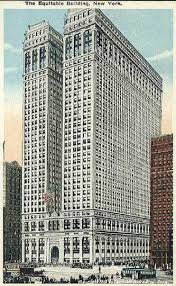Make architecture great again

It’s been a year since Donald Trump stood in his eponymous midtown tower and declared that he was running for president. Stabbing the carrot stubs he calls fingers in the air, he yelped the phrase that has since seeped into our collective consciousness: “Make America great again!”
Many of us find his message to be vile and hollow. But, strictly from my point of view as an architect, there is admittedly a certain resonance to Trump’s campaign slogan. Architecturally, America isn’t great anymore. And that’s because we can’t build anything anymore, thanks to a regulatory morass and skills shortage that have eroded our ability to conceptualize and construct projects.
The list of grand American civic projects in recent times is shorter than the No. 7 subway line extension. And what few there are have been or will be years overdue, half-baked in execution, and stupendously over-budget.
Our construction stultification manifests itself across the architectural spectrum, from ambitious megaprojects down to everyday jobs. This hit home for me when I worked on a since-shuttered jewelry store in Trump Tower.
The client asked my firm and a French firm to prepare separate drawings for bidding on the millwork and showcases—one for local contractors, another for French ones.
Our drawings for city-area contractors reflected the pain-staking process of detailing and dimensioning every single nut and bolt. We added myriad notes to protect ourselves against liability, and warned the contractors of the dire consequences of straying from our specific drawings, then had to produce a second set in even greater detail.
The French faced none of this. All they had to prepare was a single, simple drawing that showed the basic dimensions and finishes.
So even with the euro being more expensive than the dollar, and with the additional transportation and insurance costs the French contractors would trigger, the French bids came in lower, and all the showcases, millwork and woodwork were manufactured in France. Then they were shipped here and assembled on-site in Manhattan.
Why is it that an American architect has to put in twice the effort of his European counterpart to reach the same result?
Two culprits come to mind: regulation and education.
Regulation. We architects quake in our Ferragamos at the thought of being sued for errors, omissions, negligence, accidents, tripping hazards, or non-compliance with any number of regulatory agencies.
If my project were on Madison Avenue rather than Fifth, it would need Landmark Preservation Commission approval sign-off. If the client wanted sidewalk planters, that would require approvals from the Department of Transportation and its Revocable Consent Division, the New York City Design Commission, the Parks Department, the local community board and a City Council member.
It’s understandable that certain hard costs like materials are rising, but it’s harder to rationalize the skyrocketing rise of less tangible costs. The government is no ally. As a New York University study noted, “The Buildings Department is still one of the major drivers of the high cost of housing in New York City.” As for taxes, the City Journal observes, “A hypothetical New York apartment building, going up on a plot of land bought for, say, $5 million, would see real-estate, mortgage, and sales taxes add $1.6 million to the development price tag.”
The public isn’t told, doesn’t know, and worse, doesn’t care about how the government carelessly inflates the cost of living. We are being left with blocks that blur together like rest stops on a godforsaken interstate as only chains like Dunkin’ Donuts, Rite Aid and Subway can afford to set up shop.
Second, education: The U.S. trails the United Kingdom, France and Germany in trade apprenticeships per capita. Which leaves us trailing in craftsmanship.
President Obama launched a $100 million vocation education program to promote training and apprenticeships. Former Mayor Michael Bloomberg put it more bluntly: “Today, if your kid wants to go to college or become a plumber, you’ve got to think long and hard.”
Deregulate and educate: It’s a simple formula for a better-built America, so clients like mine at Trump Tower can be comfortable in the knowledge that we can manufacture a product of quality and craftsmanship to match or surpass what the French or any Europeans can do. And two sets of drawings will not be required to prove it.
Garo Gumusyan is a Manhattan-based architect at GGA Architecture.